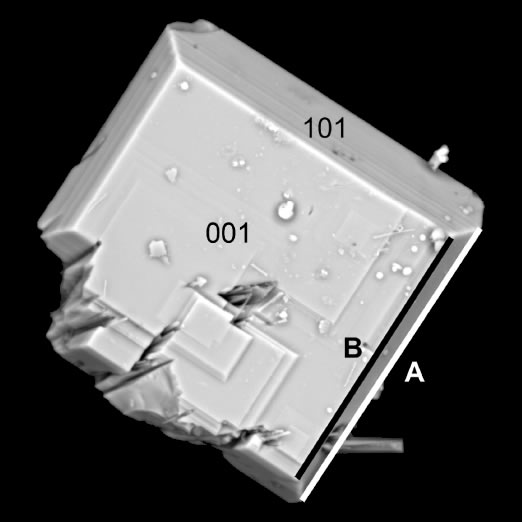Foitit-magneziofoitit a rózsa-hegyi ércesedésből, avagy a nagybörzsönyi turmalin újravizsgálata
Absztrakt
Turmalin jelenléte a nagybörzsönyi ércesedésben már 60 éve ismert. A Rózsa-hegy É-i felén, az ún. rózsabányai ércesedés területén erősen kovásodott kőzet üregeiben, illetve később képződött ásványok (kvarc, kalcit, sziderit, pirrhotin, szfalerit) zárványaiként általában 1 mm-nél rövidebb, színtelen, tűs kristályokat, tűs-sugaras, vagy nemezszerű halmazokat alkot. A korábban készült nedveskémiai elemzés alapján a szakirodalomba drávitként bekerült turmalin az újabb elektron-mikroszondás vizsgálatok alapján zónás, és a foitit-magneziofoitit ásványfajokat képviseli. A vasban és magnéziumban legdúsabb elemzési pontokon mért összetétel (31 anionra számolva): ([]0,63Na0,29Ca0,08)Σ=1,00 (Fe2+1,26Mg0,89Al0,79)Σ=2,94 Al6,00 (Si5,88Al0,12)Σ=6,00 O18 (BO3)3 (OH)4,00, illetve ([]0,45Na0,37Ca0,18)Σ=1,00 (Mg1,55Fe2+0,48Al0,83Ti0,01)Σ=2,87 Al6,00 (Si5,67Al0,33)Σ=6,00 O18 (BO3)3 (OH)4,00. A röntgen-pordiffrakciós felvételből számított rácsállandók: a = 15,901(6) Å; c = 7,190(4) Å, V = 1574(1) Å3. A turmalin hidrotermás oldatból vált ki, melynek hőmérséklete 260°C fölött lehetett. A képződő turmalin kémiáját elsősorban a hidrotermás oldat összetétele határozta meg, ebben a tekintetben a mellékkőzetek összetétele, illetve az uralkodó hőmérséklet- és nyomásviszonyok csak másodrangúak voltak. A kristályokon megfigyelhető kémiai zónásság elsősorban a Fe ↔ Mg helyettesítésből ered. A zónásság oka az lehet, hogy a Fe-gazdag hidrotermás oldatok összetételét a Mg-ban és Ca-ban gazdagabb leszivárgó vizek megváltoztatták. A turmalin tűs habitusa kristálykémiai okokra vezethető vissza, ugyanis a magas Al-tartalom és a viszonylag alacsony Fe+Mg-tartalom a c-tengely irányában való gyors növekedését segítette elő.


















